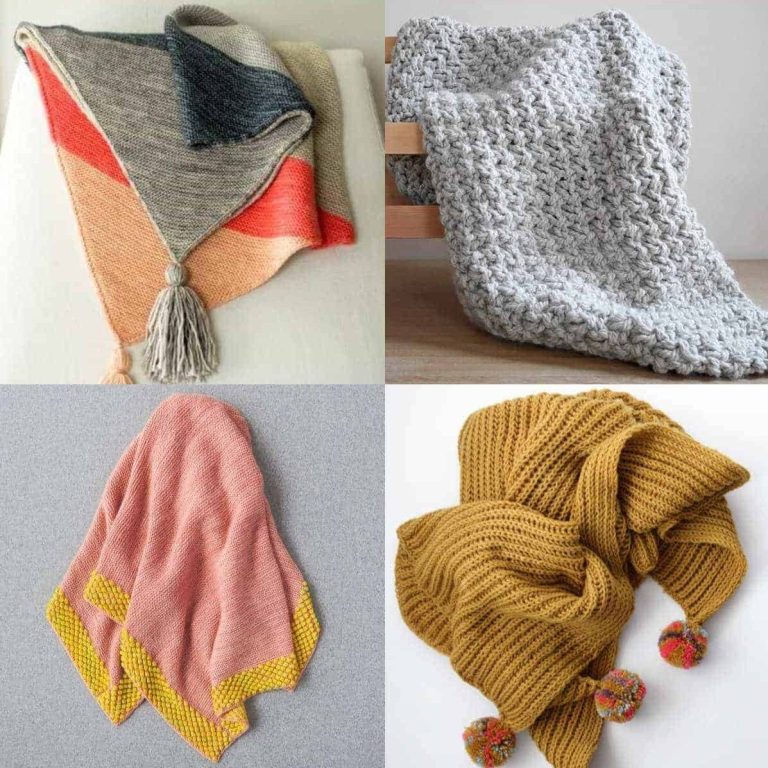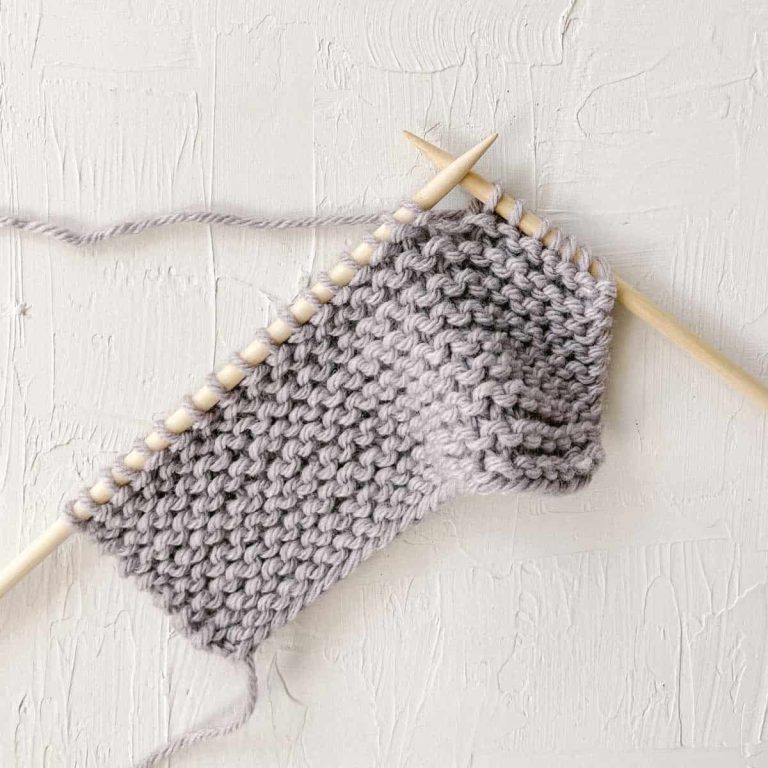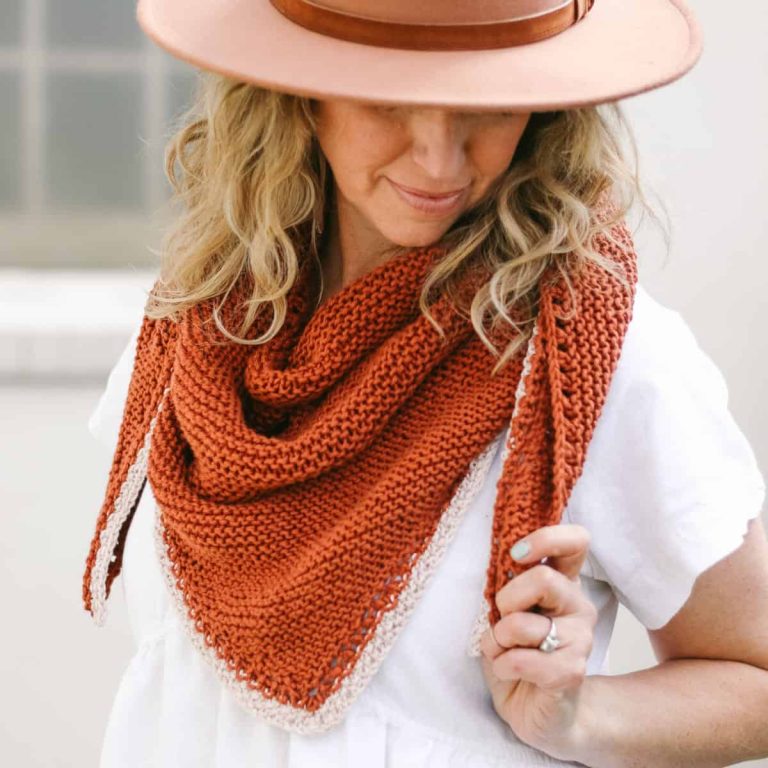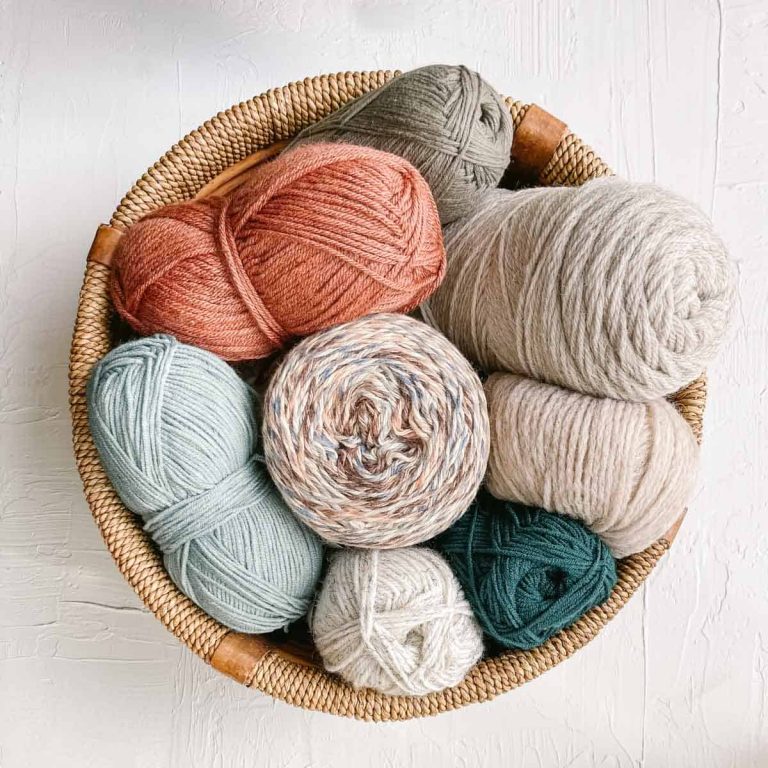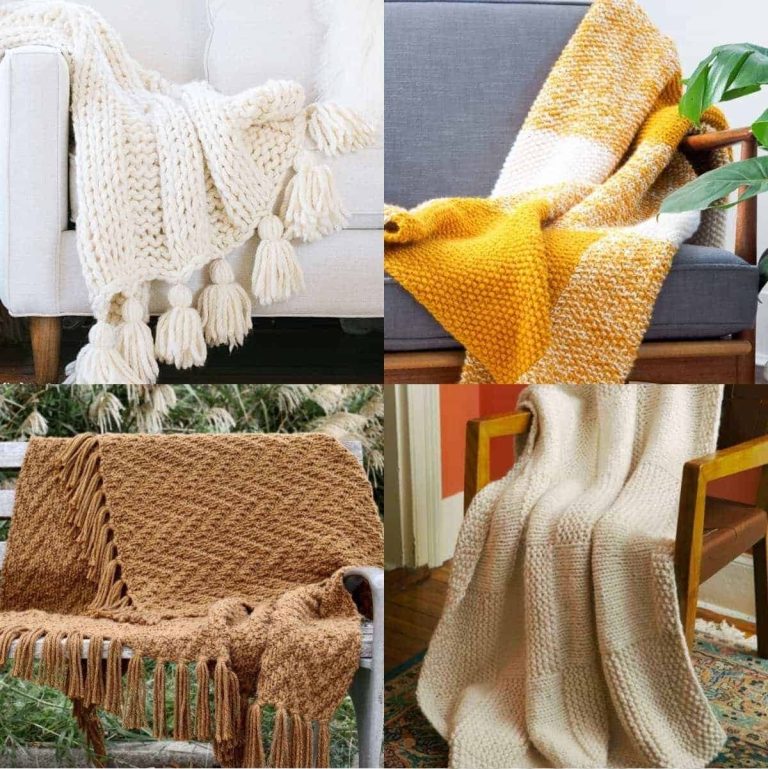What is a Skein of Yarn? Guide for Knitters and Crocheters
If you’ve dabbled in crochet or knitting, you’ve likely heard the phrase skein of yarn. But you may be wondering, what exactly is a skein of yarn? And how does it differ from other ways yarn is packaged, like balls, hanks, or cakes?
I’ll explain what you need to know about choosing a skein of yarn, plus:
- How to find that pesky hidden tail to begin using a skein.
- Why mini skeins can be a creative alternative to the big guys.
- If it matters to your project whether your yarn is a skein, donut, hank, or ball.
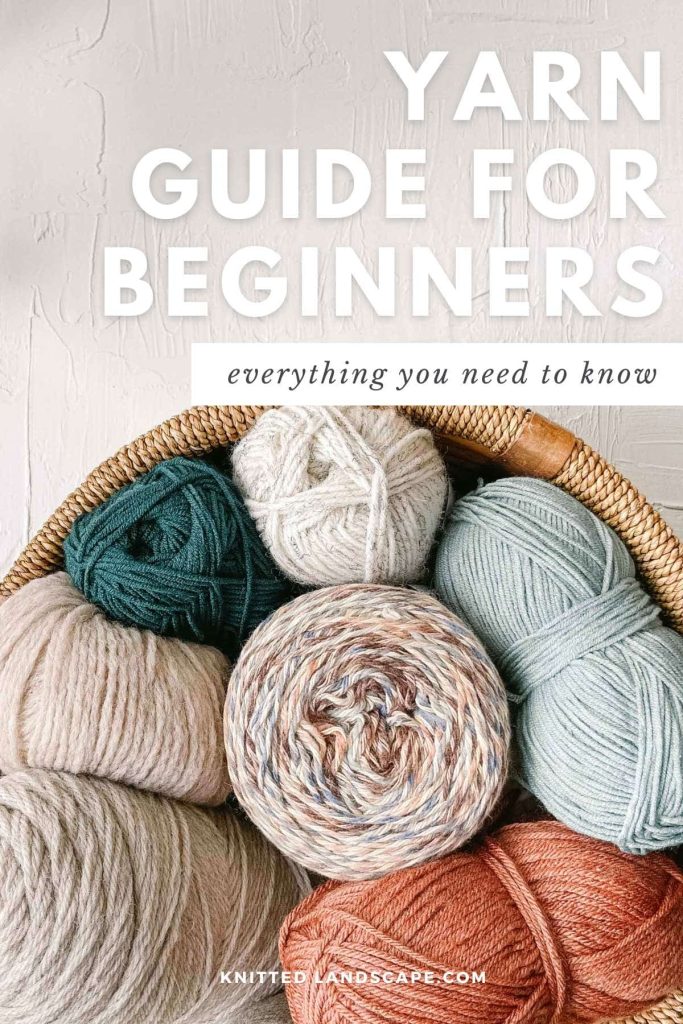
What is a Skein of Yarn?
A skein of yarn is a single bundle of yarn wound into an oblong shape with a tail you can pull from the outside or center. In the knitting and crochet world, a skein is a popular way to package and sell yarn, especially in larger retail stores like Michaels or Joann’s.
Yarn skeins have labels wrapped around them that provide essential information about fiber content, yardage, and washing instructions.
Skeins come in many sizes and shapes, typically weighing 50 to 450 grams and containing anywhere from 50 to 1000 yards of yarn.
Basically, a skein is a little yarn cocoon, patiently waiting to be transformed into something fantastic by your skillful hands.
How to Pronounce “Skein”
Ah, the tricky pronunciation of “skein”! Many crafters, including me, have stumbled over this word. Let’s break down how to pronounce the word skein.
The phonetic spelling of “skein” is /skeɪn/ or /skān/. I realize that doesn’t mean much to most of us, though. To make it easier, think of words that rhyme with “skein,” – such as “rain,” “chain,” or “plane.”
Still finding the pronunciation of skein tricky? Repeat after me: “Skein is like rain, a word I shall retain!”
Or just call your skeins of yarn “balls.” That’s okay too!
Did you know? “Skein” is often used as a general unit of yarn, even if the yarn used in the pattern is wound differently. Our free crochet patterns often say “6 skeins of yarn,” but we really mean that 6 units of the yarn are used in the pattern.
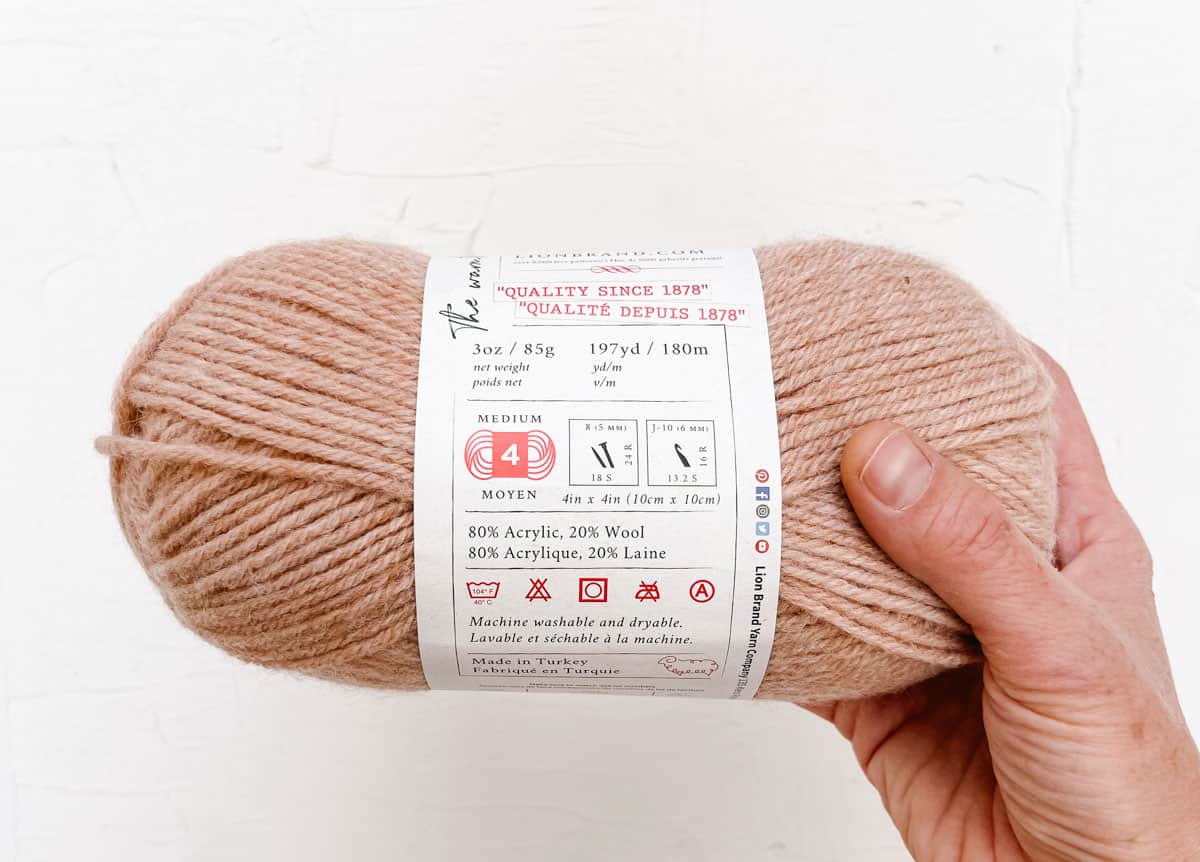
How to Choose a Skein of Yarn
Now that we know what a skein is and how to (mostly) pronounce it with confidence, let’s delve into the fun part– choosing the perfect skeins for your project. There are a few factors to consider.
All of the information below can be found on the label wrapped around the skein of yarn.
Reading the label may seem overwhelming at first, but it provides valuable information about the yarn’s characteristics, recommended needle or hook size, and even a gauge to guide you.
Finding the End in a Skein of Yarn
A skein of yarn has two places you can begin pulling yarn from to begin knitting or crocheting with it.
How do you find both ends of yarn in a skein? Let’s explore the common methods: discovering the tail on the outside of a yarn ball and pulling the tail from the center of a skein.
Outside
Remove the yarn label and examine the exterior of the skein. You’re looking for a loose end that sticks out slightly from the rest of the yarn. It may be tucked in or hanging out of the ball. Once you spot it, carefully unwind the yarn and reveal the beginning of your skein.
The main benefit of pulling your yarn from the outside of the skein is that the yarn end tends to be easier to find than the inside tail. The drawback of this method is that the skein is more likely to roll around while you knit or crochet. Click here for ideas on keeping your yarn organized as you work.
Center-Pull
To find the center pull, look for an end that peeks out from the top or bottom of the skein. It’s often hidden inside the center of the skein, so softly separate the interior yarn layers with your thumb and index finger until you locate the end.
Once you find it, gently pull on the bundle of yarn around the tail to release the yarn from the center. This interior clump of yarn is often referred to as the “yarn baby” or “yarn barf.” Pulling it out at the same time as the tail helps ensure your yarn doesn’t get tangled in the process.

Gently separate layers of yarn.
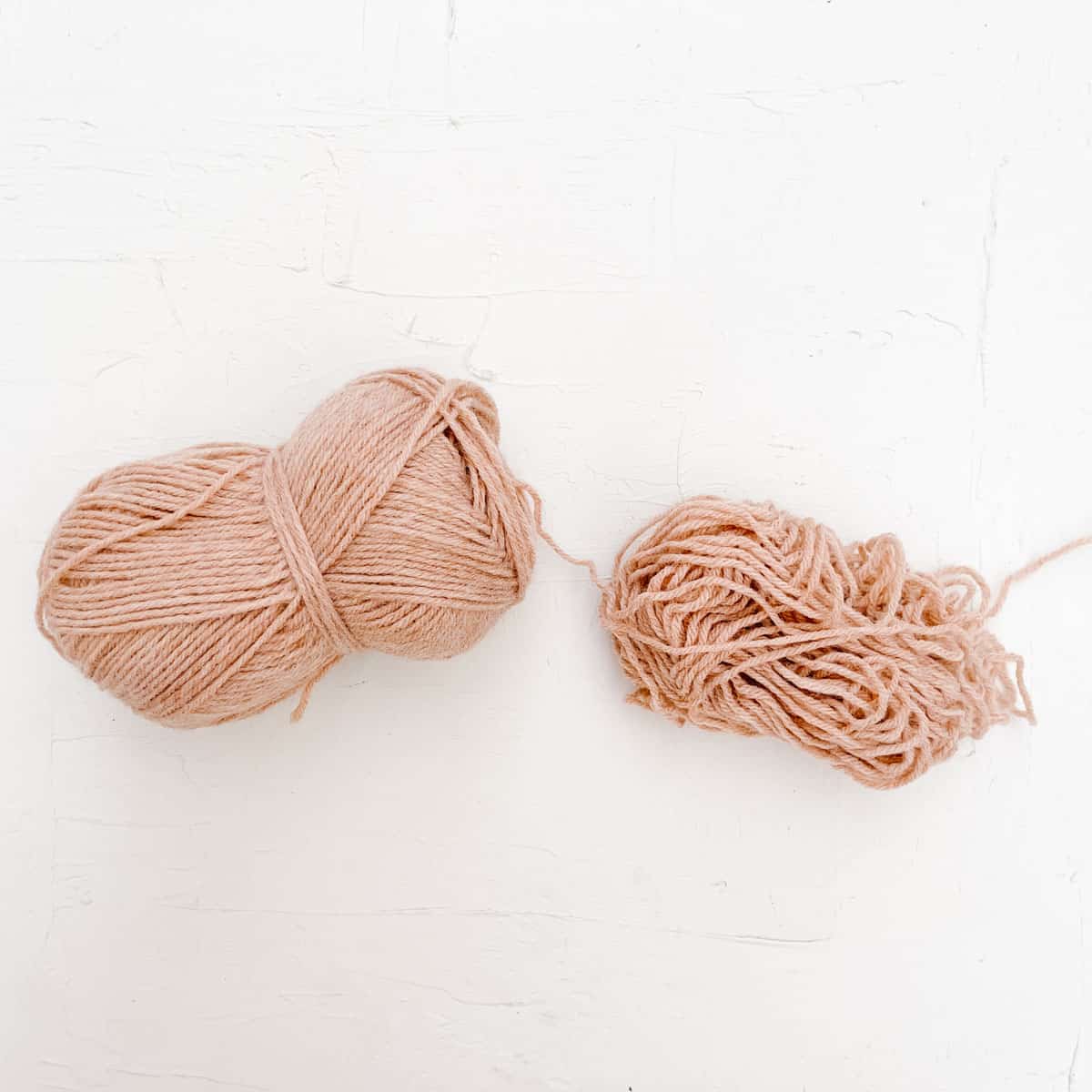
“Yarn barf” can be a side effect of this method.
Many crafters like this approach because it can help keep your skein stationary while you pull yarn from it.
The biggest drawback is finding the center pull tail can be harder, and the yarn can get tangled as the skein compresses toward the end. (I like to put my skein in a yarn bowl or zip-loc bag at this point because I find it helps prevent some tangles.)
Joining a New Skein of Yarn
What happens when you use up an entire skein of yarn and your project isn’t finished? It’s time to attach a new one.
Here are a few ways to join a new skein of yarn while knitting or crocheting.
Splicing:
This technique is commonly used with yarns made from natural fibers like wool or cotton. Splicing allows you to seamlessly attach the new skein to the old one.
It involves blending the tails of both skeins together and felting or knotting them. The result is a smooth transition without any visible joins (or extra ends to weave in – hooray!) All About Ami has a fantastic tutorial on this method.
Knotting:
Another way to join a new skein is by using a knot. This method works well with most yarns, especially those with synthetic fibers or blends. To join, simply tie a secure knot between the two skeins, leaving 10” tails of each yarn.
Weave in the loose ends later to ensure a tidy finish. (Some crocheters and knitters choose to untie the knot before weaving in ends, depending on how much of a purist they are about avoiding knots in their projects.)
Russian Join:
This method cleverly combines two strands of yarn by weaving them back into their own plies with a tapestry needle. This creates a small bump where the join is, but it’s hardly noticeable in the knit or crochet fabric.
What Are Mini Skeins of Yarn?
Mini skeins are small, adorable versions of regular skeins. These pint-sized bundles of joy have become incredibly popular among knitters and crocheters.
They typically contain around 20-50 grams of yarn, making them perfect for adding pops of color, experimenting with new artisanal yarns, or creating beautiful color gradients without purchasing lots of full-size skeins.
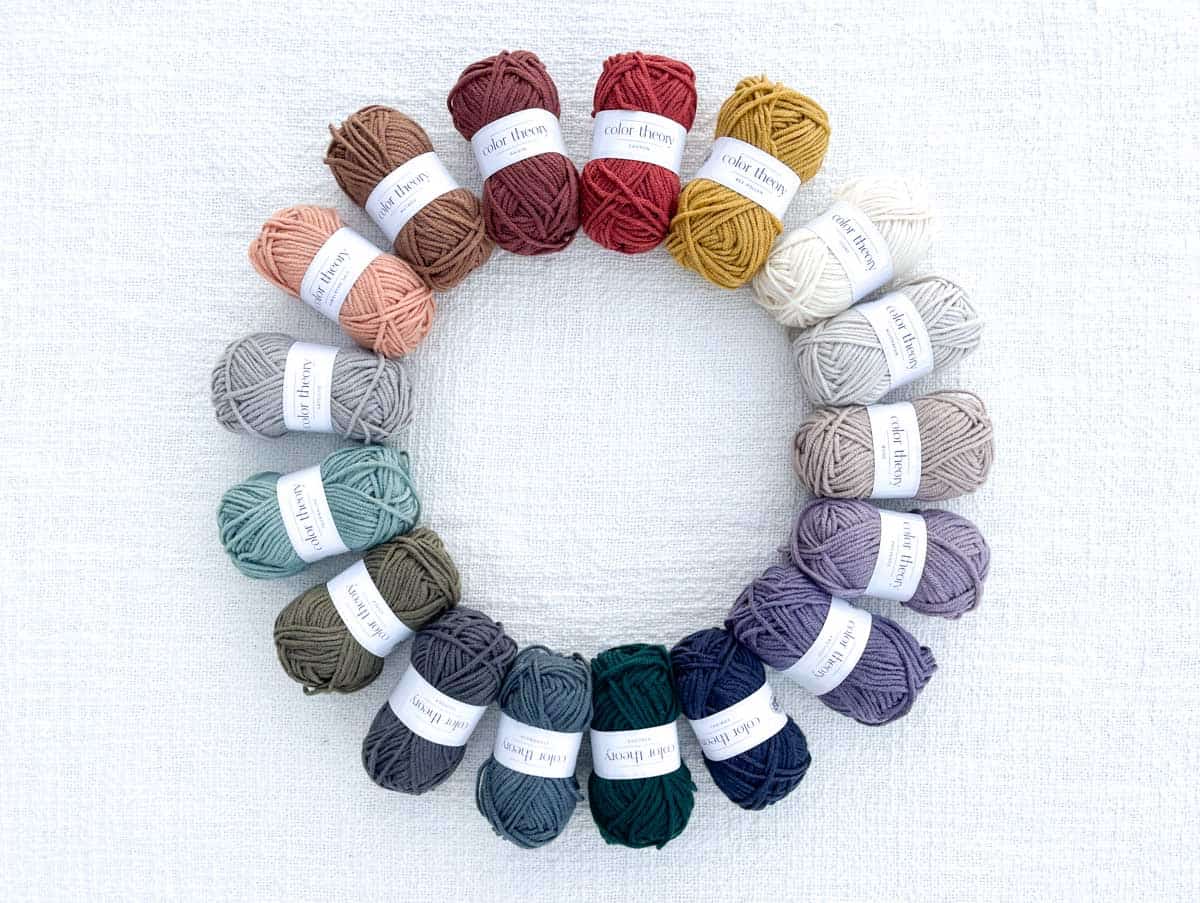
Advantages of Mini Skeins
There are many reasons to love mini skeins for certain projects.
- Variety: Mini skeins allow you to incorporate multiple coordinated colors into your work, which can be ideal for patchwork sweaters or blankets, crazy “quilt” patterns or any other projects you want to have a scrappy look.
- Reduced Waste: With mini skeins, you can enjoy the freedom of working on small projects or adding accents without buying full-sized skeins. It’s often a great option if you want to enjoy purchasing new yarn for every project and don’t plan to use up leftover partial skeins.
- High-End Sampler Platter: Mini skeins are often a more budget-friendly option to sample colors from an indie yarn dyer. Get your fix of gorgeous hand-dyed yarn rainbows without breaking the bank!
How to Use Mini Skeins of Yarn
I get it. You couldn’t help but buy the cute mini skeins. We’ve all been there.
Here are some inspiring project ideas to put your mini skeins to good use:
- Socks: Mini skeins are often available in fingering or DK weight yarn, making them ideal for making knit or crochet socks. Play with stripes, color combinations, or create a whimsical mismatched pair.
- Shawls: Many knitters and crocheters use mini skeins to make stunning colorful shawls. The smaller size of the skeins allows you to experiment with different stitch patterns or create captivating color transitions.
- Blankets: Combine mini skeins to create a unique patchwork blanket, each square or section with a different color or pattern. It’s a fantastic way to showcase your favorite yarns and create a one-of-a-kind keepsake.
Different Ways Yarn Is Packaged and Sold
Now that we’ve covered the ins and outs of using skeins and mini skeins let’s take a closer look at the different packaging methods you’ll encounter when buying yarn.
Understanding these package options, also known as “put ups,” will make you an expert next time you head to the yarn store.
Hanks
A hank is a large ring of yarn that is twisted together into what I always think resembles a beautiful baguette. This type of packaging is often used for natural fibers or hand-dyed yarns.
Hanks require winding before use to avoid becoming a tangled mess. To wind a hank, you can use a swift (a tool that holds the hank in place) and a ball winder. You can also wind it by hand if someone is willing to lend you their forearms for a few minutes.
The blue hand-dyed yarn below is an example of a hank.
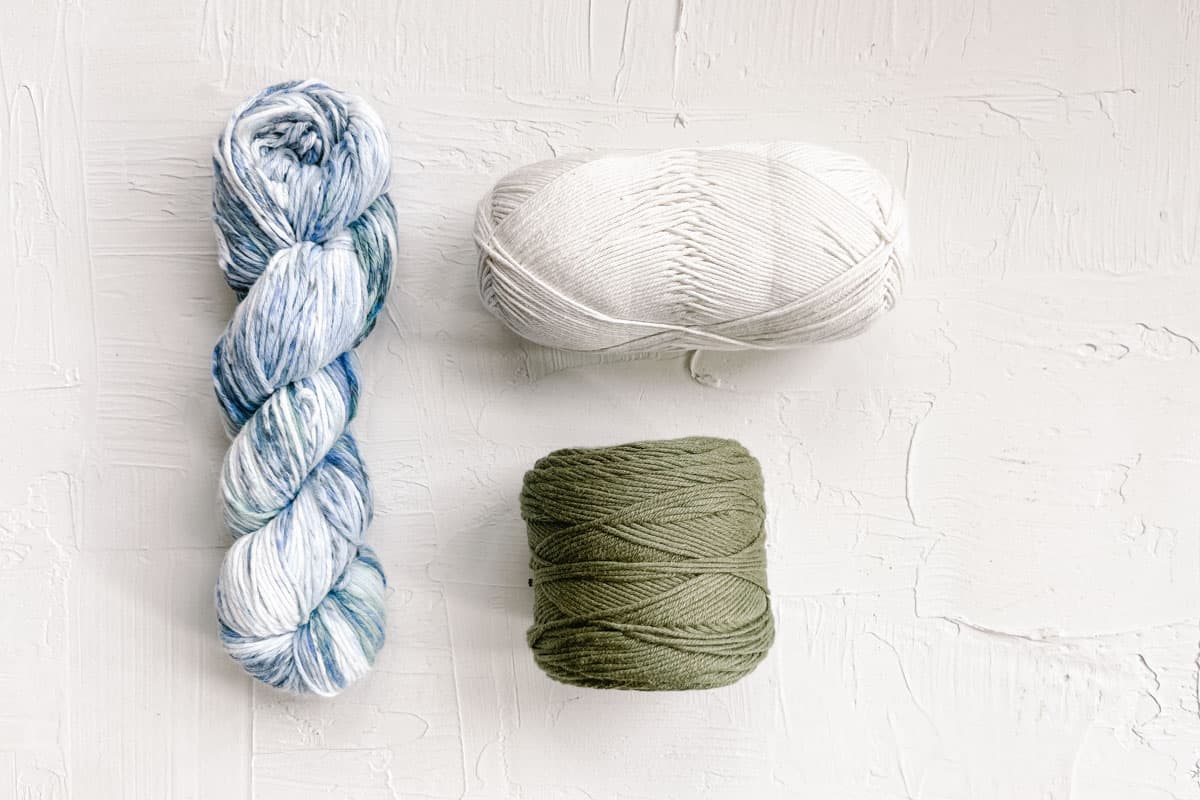
Cakes
A yarn cake is a flat cylinder that is wound by a winder and swift (often by the manufacturer.) Cakes are often used for gradient or self-striping yarns and can be worked from the center or the outside.
Working from the center allows for seamless color changes while working from the outside allows for more control over color transitions.
Lion Brand Mandala yarn is a popular yarn that comes in cake form.
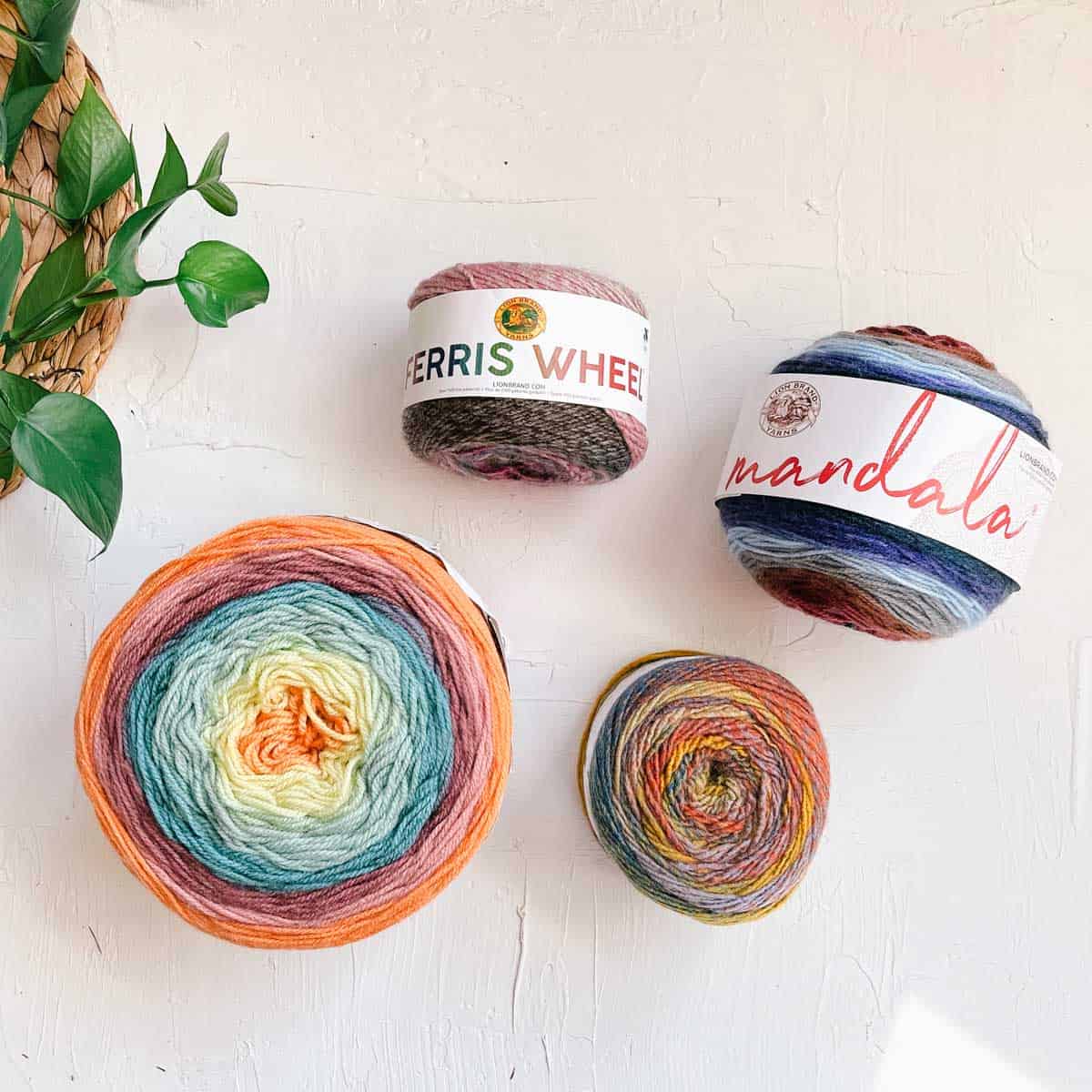
Balls
A ball is a classic sphere-shaped bundle of yarn that can be wound by hand or machine. You’ll work it from either the center or the outside. Balls are commonly used for small or medium-weight yarns and are readily available in most yarn stores. The word “ball” is often used interchangeably with “skein.”
Donuts
A donut is a ring-shaped bundle of yarn with a hole in the center. Similar to cakes and balls, donuts can be worked from the center or the outside.
Often, you’ll see donuts used for high-end or bulky yarns. The hole in the center provides easy access to the yarn, helping to prevent tangling. One of my favorite donut yarns is Lion Brand Chainette.
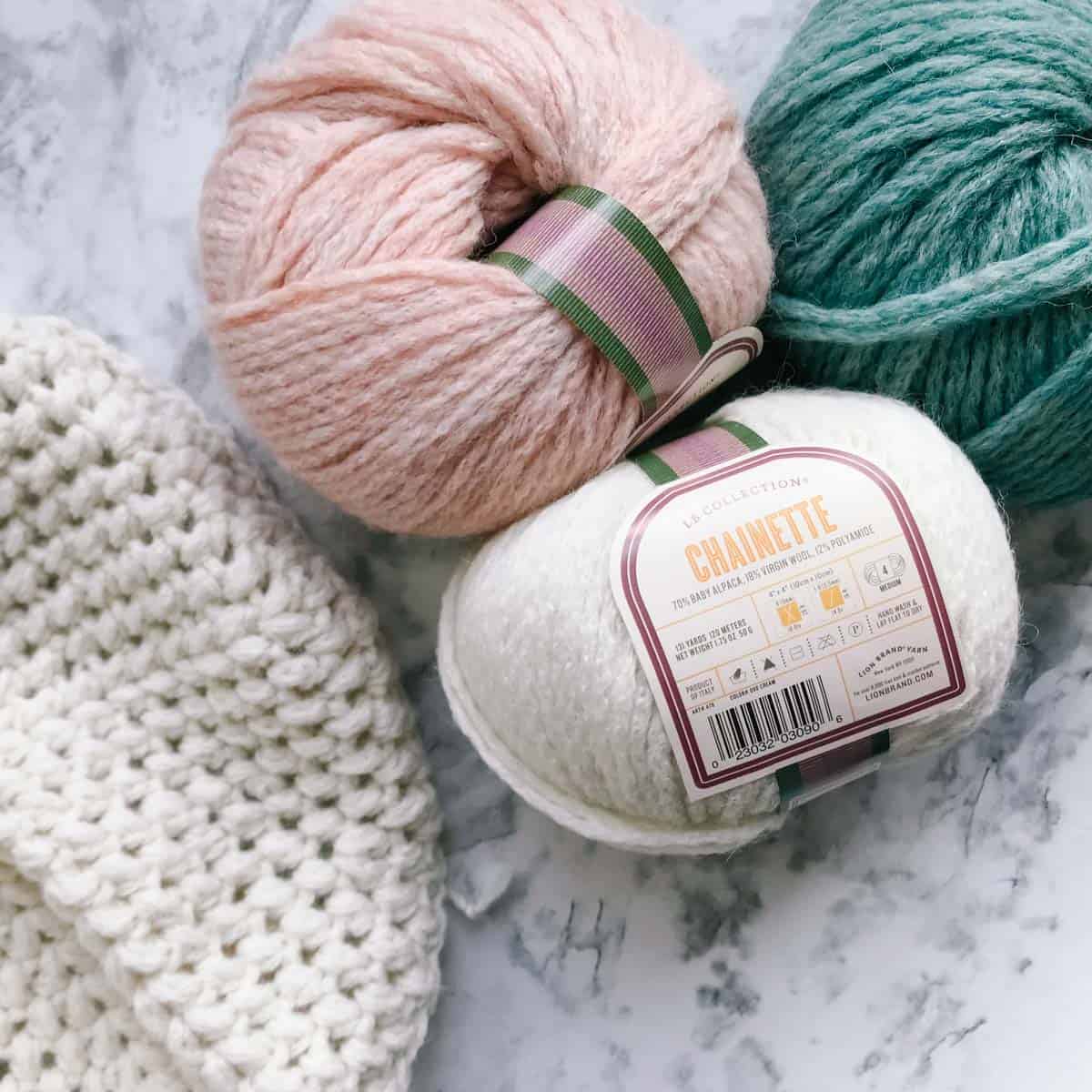
Cones
As it sounds, a cone is a cone-shaped bundle of yarn that is wound around a cardboard core. You can work it from the outside only.
Cones of yarn are commonly used for weaving or machine knitting projects. The large quantity of yarn on a cone eliminates the need to weave in as many yarn tails and is ideal for projects that require a continuous supply of yarn.
Remember, no matter how the yarn is packaged, the important thing is that it’s ready for you to transform into something beautiful.
How to Store and Care for a Skein of Yarn
Now that you have your cherished skeins, you’ll want to ensure they remain in excellent condition. Proper storage will help protect your yarn as it’s waiting to be used.
I’m sharing some best practices to follow, but keep reading for the real truth on how I store my yarn.
• Protect your skeins from dust, moisture, insects, and pet hair by storing them in a cool, dry place.
• Avoid exposure to direct sunlight, as it can cause fading and discoloration.
• Consider using sealed plastic bags or containers to safeguard against pests and moisture. Opt for acid-free tissue paper or fabric bags for added protection if possible.
Using Your Skeins of Yarn as Household Decor
Okay, now that we’ve covered the safest way to store your skeins of yarn, let’s talk about the most beautiful way!
If you’re anything like me, you don’t want your skeins of yarn hidden away in plastic totes. Instead, try creating a color palette display! Arrange your yarn by color in a basket or on a shelf. This visually stunning display not only showcases your yarn collection but also serves as inspiration for future projects.
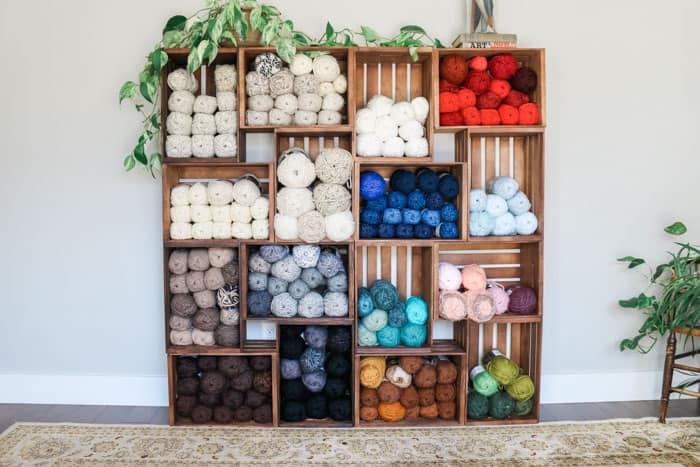
Final Thoughts
We’ve covered everything from understanding what a skein is to choosing the perfect one for your project. We’ve learned how to start and join skeins seamlessly, explored the wonders of mini skeins, and discovered the various ways yarn is packaged and sold.
A skein of yarn is most magical when used to knit or crochet something, so dive into our free patterns and find your next project!
